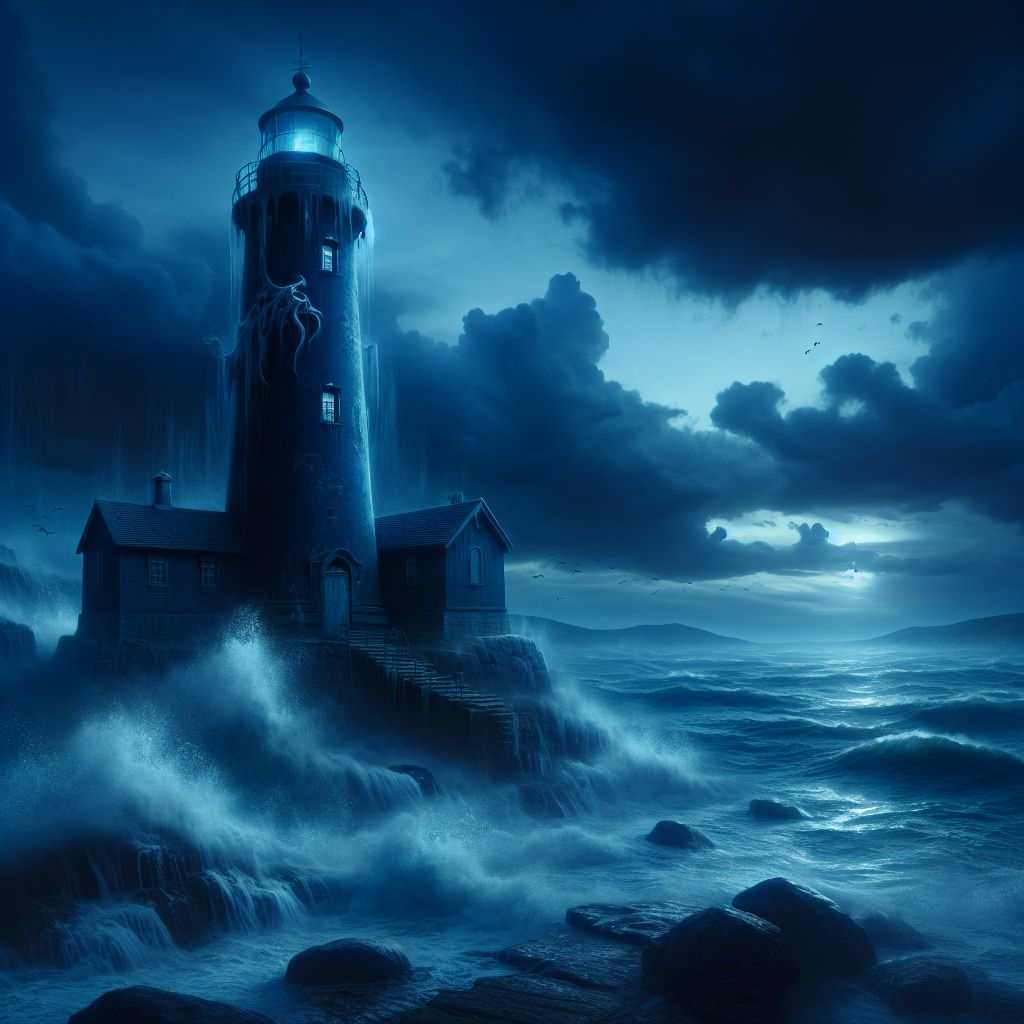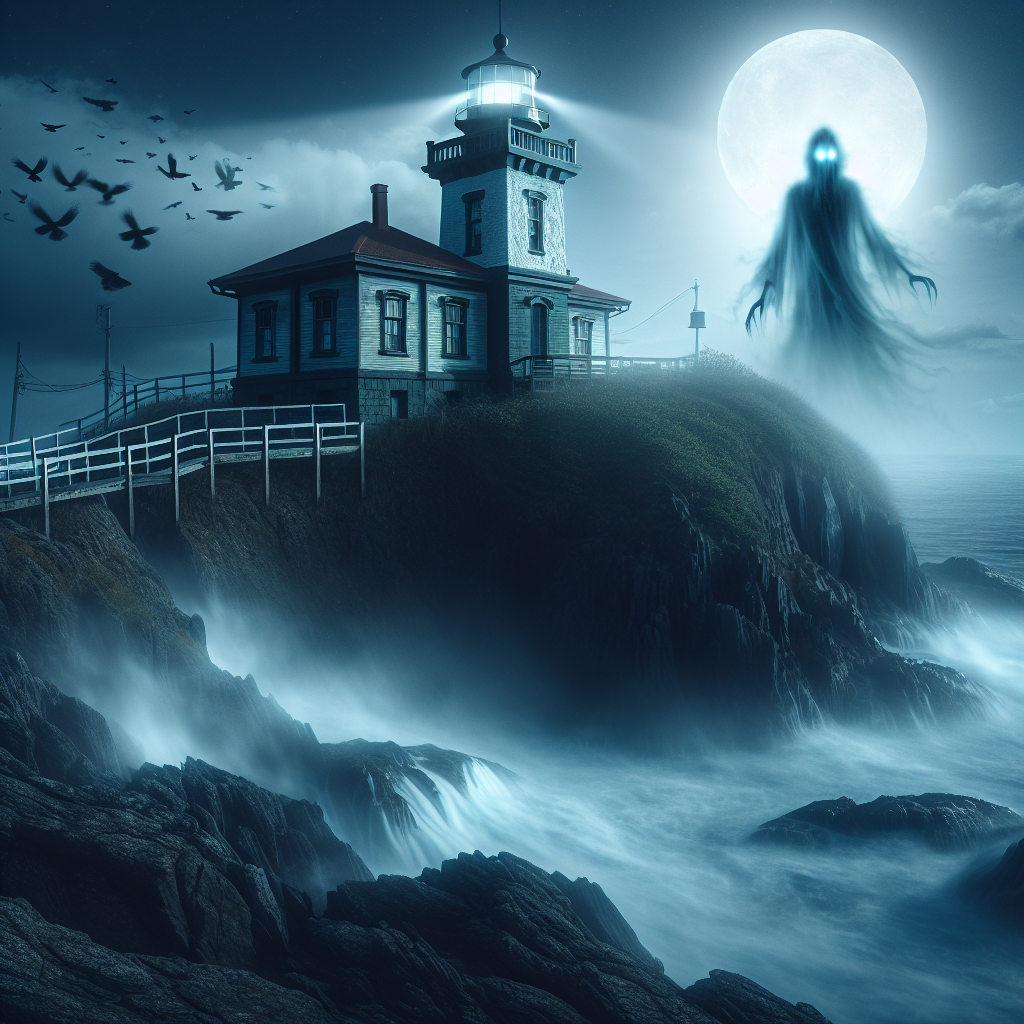-
Table of Contents
“Where Shadows Meet the Sea: Discover the Secrets of Lighthouse Hauntings.”
Introduction
Lighthouse hauntings have long captivated the imagination, intertwining maritime lore with ghostly tales. These coastal beacons, once vital for guiding sailors safely to shore, are often steeped in history and tragedy, making them fertile ground for ghost stories. Many lighthouses, with their isolated locations and rugged surroundings, have become the backdrop for eerie encounters and spectral sightings. From the apparitions of long-departed keepers to mysterious lights flickering in the night, the legends surrounding these structures evoke a sense of mystery and intrigue. As guardians of the sea, lighthouses not only illuminate the waters but also illuminate the darker corners of human experience, where the past lingers and the supernatural may still roam.
Ghostly Guardians: The Spirits of Abandoned Lighthouses
Lighthouses, often seen as beacons of hope and safety for mariners navigating treacherous waters, have long been shrouded in mystery and folklore. As solitary structures perched on rugged coastlines, they evoke a sense of isolation and intrigue, which has led to numerous tales of ghostly guardians. These spirits, believed to be the remnants of former lighthouse keepers or sailors lost at sea, are said to linger in the shadows of abandoned lighthouses, watching over the waters they once served. The stories surrounding these spectral figures not only captivate the imagination but also reflect the deep emotional connections that people have with these maritime sentinels.
One of the most compelling aspects of lighthouse hauntings is the historical context that often accompanies them. Many lighthouses were built in the 19th century, a time when the role of the lighthouse keeper was both vital and perilous. These individuals dedicated their lives to ensuring the safety of passing ships, often enduring harsh weather conditions and long periods of solitude. The emotional toll of such a demanding profession can lead to a belief that their spirits remain tied to the very structures they once tended. For instance, the haunting of the Cape Hatteras Lighthouse in North Carolina is attributed to the spirit of a keeper who tragically lost his life while attempting to save a shipwrecked crew. Visitors to the lighthouse have reported strange occurrences, such as flickering lights and disembodied voices, which many attribute to the lingering presence of this devoted guardian.
Moreover, the isolation of lighthouses often amplifies the eerie atmosphere surrounding them. Abandoned lighthouses, in particular, become focal points for ghost stories, as their dilapidated structures and crumbling walls evoke a sense of nostalgia and loss. The haunting of the St. Augustine Lighthouse in Florida serves as a prime example. This historic site is said to be home to the spirits of two young girls who drowned in the nearby waters. Their playful apparitions have been reported by visitors, who claim to hear laughter and see fleeting shadows darting through the lighthouse. Such encounters not only add to the lore of the lighthouse but also serve as a reminder of the tragic events that have unfolded in these coastal locales.
In addition to the personal stories of lighthouse keepers and their families, the broader maritime culture contributes to the mystique of these haunted sites. Sailors have long believed in the existence of spirits that protect the seas, and lighthouses are often seen as the physical manifestations of these guardians. The notion that a lighthouse keeper’s spirit continues to watch over the waters reinforces the idea of a protective presence, offering solace to those who traverse the unpredictable ocean. This belief is particularly poignant in regions with a rich maritime history, where the line between reality and folklore often blurs.
As interest in paranormal investigations grows, many abandoned lighthouses have become popular destinations for ghost hunters and enthusiasts. These individuals seek to uncover the mysteries that lie within the walls of these historic structures, hoping to capture evidence of the spectral guardians that are said to inhabit them. The combination of history, tragedy, and the supernatural creates a compelling narrative that continues to draw people to these coastal landmarks. Ultimately, the ghostly guardians of abandoned lighthouses serve as a testament to the enduring human connection to the sea, reminding us of the sacrifices made by those who dedicated their lives to safeguarding others.
Eerie Encounters: True Stories of Lighthouse Hauntings

Lighthouses, with their towering structures and solitary locations, have long been associated with maritime lore and ghostly tales. These beacons of light, designed to guide sailors safely to shore, often stand as silent witnesses to the tragedies and triumphs of seafaring life. As a result, many lighthouses have become the focal points of eerie encounters and haunting stories, steeped in history and mystery. The combination of isolation, the relentless power of the sea, and the tragic narratives of those who once manned these structures creates an atmosphere ripe for ghostly phenomena.
One of the most famous lighthouse hauntings is that of the St. Augustine Lighthouse in Florida. Built in 1874, this historic site has been the subject of numerous ghost stories, particularly those involving the spirits of two young girls who tragically drowned in the nearby waters. Visitors and staff have reported hearing the sounds of children laughing and playing, as well as the sensation of being watched. Some have even claimed to see apparitions of the girls, often described as ethereal figures dressed in white, wandering the grounds. These encounters have led to the lighthouse being recognized as one of the most haunted locations in the United States, drawing paranormal enthusiasts and curious tourists alike.
Similarly, the Cape Hatteras Lighthouse in North Carolina has its share of ghostly tales. This iconic structure, known for its striking black and white stripes, has been the site of numerous shipwrecks and maritime disasters. The spirit of a former keeper, who is said to have perished while attempting to save a shipwrecked crew, is often reported by visitors. Witnesses describe feeling a sudden chill in the air and hearing footsteps echoing through the empty halls. Some have even claimed to see a shadowy figure standing watch at the top of the lighthouse, a guardian of the sea who continues to fulfill his duty long after death.
In addition to these well-known sites, lesser-known lighthouses also harbor their own ghostly legends. The Point Lookout Lighthouse in Maryland, for instance, is said to be haunted by the spirit of a woman who once lived there with her husband, a lighthouse keeper. After her husband’s untimely death, she reportedly became despondent and eventually vanished, leaving behind a lingering presence. Visitors have recounted experiences of hearing her mournful cries and feeling an inexplicable sadness enveloping them as they explore the lighthouse. Such stories highlight the emotional weight that these structures carry, often serving as memorials to those who dedicated their lives to the safety of others.
Moreover, the haunting tales associated with lighthouses often reflect the broader themes of loss and longing. The isolation of these coastal sentinels, combined with the harsh realities of life at sea, creates a poignant backdrop for the stories of those who have passed. As the waves crash against the rocks and the wind howls through the lantern room, it is easy to imagine the spirits of former keepers and sailors lingering in the shadows, forever tied to the places they once called home.
In conclusion, the eerie encounters reported at lighthouses around the world serve as a testament to the enduring connection between the living and the dead. These structures, steeped in history and tragedy, continue to captivate our imaginations, inviting us to explore the mysteries that lie within their walls. Whether one believes in the supernatural or not, the stories of lighthouse hauntings remind us of the profound impact that love, loss, and duty can have, echoing through time like the distant sound of a foghorn on a stormy night.
The History and Hauntings of Famous Lighthouses
Lighthouses have long been symbols of guidance and safety for mariners navigating treacherous waters. However, their storied histories often intertwine with tales of tragedy and loss, leading to a rich tapestry of ghostly legends and hauntings. Many famous lighthouses around the world are not only known for their architectural beauty and historical significance but also for the spectral presences that are said to linger within their walls. These haunting tales often stem from the lives of the keepers who dedicated themselves to the light, sometimes at the cost of their own lives.
One of the most renowned lighthouses associated with ghostly tales is the St. Augustine Lighthouse in Florida. Built in 1874, it is the oldest standing brick structure in the state. The lighthouse has a history marked by accidents and misfortunes, including the tragic drowning of a young girl named Eliza, who is said to have fallen from the cliffs nearby. Visitors and staff have reported sightings of her ghostly figure, often described as a fleeting shadow or a soft, sorrowful presence. The lighthouse’s paranormal activity has attracted numerous ghost hunters and enthusiasts, all eager to capture evidence of the spectral phenomena that many believe are tied to the lighthouse’s dark past.
Similarly, the Point Pleasant Lighthouse in New Jersey has its own share of ghostly lore. This lighthouse, which was built in the early 19th century, is said to be haunted by the spirit of a former keeper who perished in a storm while attempting to save a ship in distress. Locals recount stories of hearing footsteps echoing through the tower and the faint sound of a bell tolling, even when no one is present. These eerie occurrences have led many to believe that the keeper’s spirit remains vigilant, continuing his watch over the waters he once protected.
Moving northward, the Cape Hatteras Lighthouse in North Carolina stands as a testament to both maritime history and ghostly encounters. Known for its striking black and white spiral design, this lighthouse has witnessed countless shipwrecks along the treacherous Outer Banks. The stories of lost sailors and their desperate cries for help have contributed to the belief that their spirits linger near the lighthouse. Visitors have reported hearing whispers carried by the wind and feeling an inexplicable chill as they ascend the winding staircase, suggesting that the souls of those who perished at sea may still be searching for solace.
In addition to these well-known lighthouses, many others across the globe share similar tales of hauntings. The eerie atmosphere surrounding these structures often stems from the isolation experienced by lighthouse keepers, who spent long hours alone, sometimes leading to feelings of despair and loneliness. This emotional weight can create a lingering energy that manifests as paranormal activity, drawing the attention of those who seek to understand the mysteries of the afterlife.
As we explore the history and hauntings of these famous lighthouses, it becomes clear that they serve as more than mere navigational aids. They are repositories of human experience, embodying the hopes, fears, and tragedies of those who have come before. The spectral stories associated with these lighthouses remind us of the fragility of life and the enduring nature of love and duty, as the spirits of the past continue to watch over the shores they once protected. Thus, the allure of lighthouse hauntings lies not only in their ghostly tales but also in the profound connections they forge between the living and the departed.
Conclusion
Lighthouse hauntings often stem from the tragic histories associated with these coastal structures, where isolation, shipwrecks, and the harshness of maritime life have led to tales of ghostly apparitions and unexplained phenomena. The combination of their remote locations and the dramatic settings of stormy seas contributes to the eerie atmosphere surrounding these sites. As a result, lighthouses have become focal points for ghost stories and paranormal investigations, captivating the imagination of both locals and visitors alike. Ultimately, lighthouse hauntings serve as a reminder of the human experiences tied to these beacons of safety, blending history, folklore, and the supernatural into a compelling narrative.

Leave a Reply